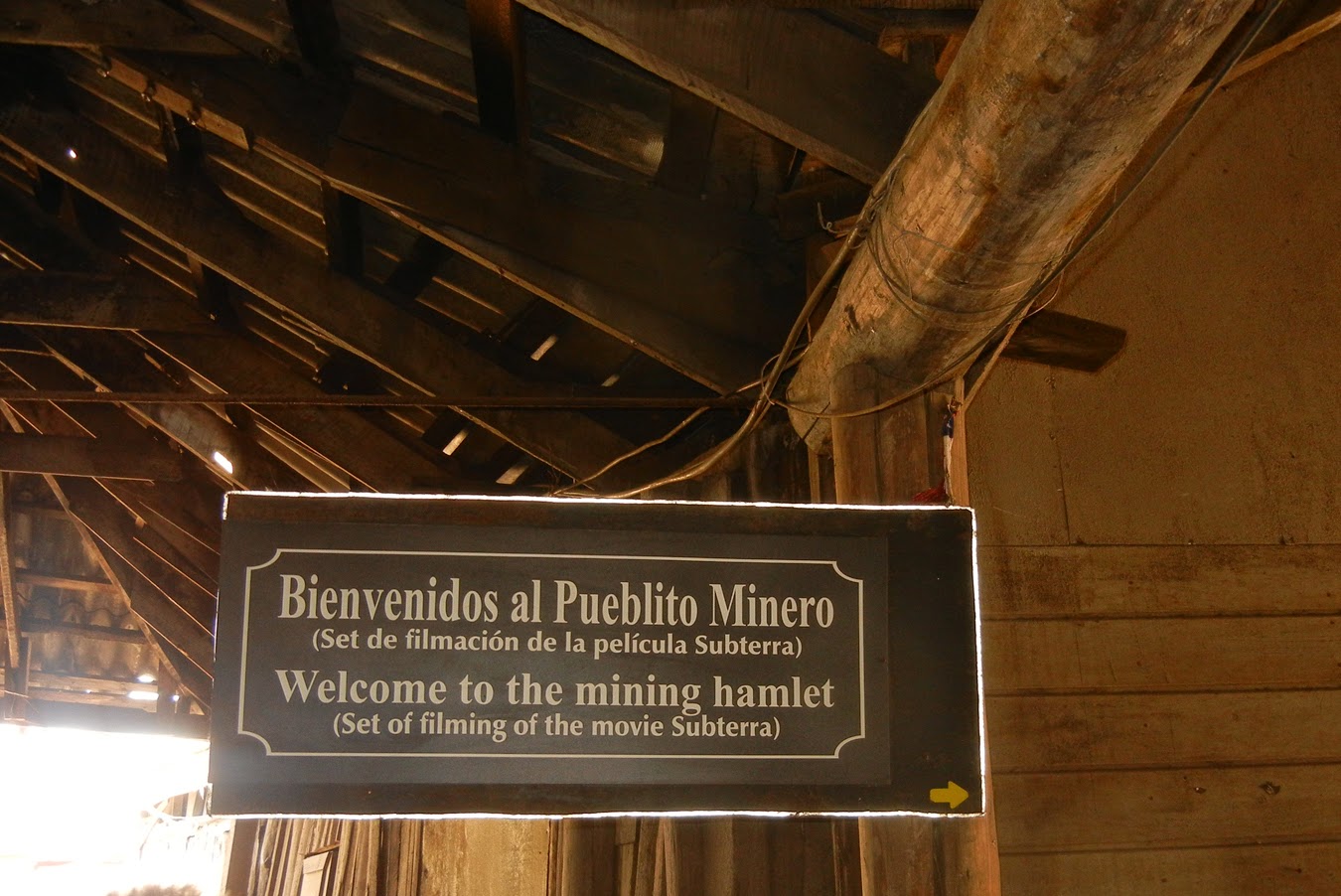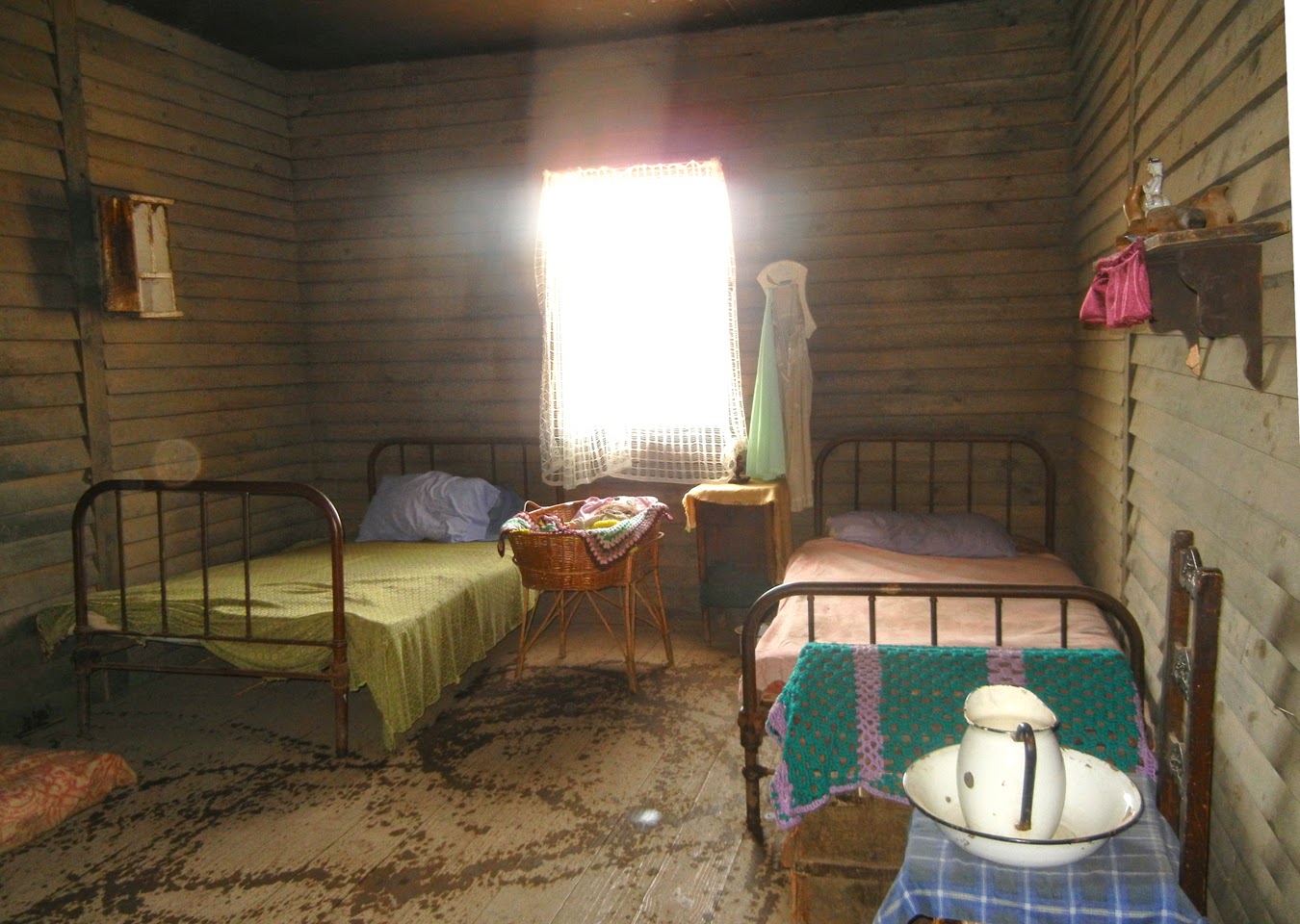The third week of October was sunny and in the 70s. Several Chileans told us it was getting too warm.
We attended Barrio San Vicente in the Talcahuano North Stake, a warm, friendly ward. We made contact with several people who needed help with their PEF loans or were interested in a better education.
On Monday we stopped at the mission office to unload some of the things we have been accumulating in our little apartment. We have been informed that we will not be moving south to Temuco after all, but staying in Concepción. It is still good to get rid of things you don't need.
Above is a photo of Elder Kauer's shelves for extra missionary clothing. Missionaries can choose what they need or drop off what they don't use anymore. Whatever is too worn out, Hna. Kauer crochets into round rugs.
Tuesday we attended a zone conference with the Concepción elders and the elders and sisters serving in Chiguayante. We are impressed with these young missionaries.
On Saturday, the senior missionaries went on an outing down to Lota, south of Coronel.
The Chiflón del Diablo coal mine, which closed in 1997, is in Lota. Chiflón means a draft of air, since the mine is naturally ventilated. The mine follows a seam of bituminous coal 12 miles under the ocean, although the seam itself goes on for miles. It was closed for economic reasons.
Here we are in our hard hats, which are colored according to status. Blue is for mechanics and electricians, red and yellow are for manual laborers, and white is for managers. We wore 5 lb. battery packs, which last for a day.
Our guide, Daniel, son and grandson of illiterate miners, was a miner until 1996, when 16,0000 miners in four mines were fired overnight. He is no taller than I am. Here he is explaining about the canary cage and different ways to avoid death by odorless gases. He sang us a heart-rending rendition of the miner's hymn.
Walking down the mine while you could still stand up.
Elder Kauer and Elder Balden had to walk doubled over to get through some of the tunnels.
It was disconcerting to walk on wet sand and find piles of seashells on the tunnel floor.
A seam of coal encased in petrified wood. Daniel told us the mine is too young to have been compressed enough to become anthracite coal or to contain diamonds.
Daniel took a photo of me pulling myself up the wet, steep tunnel to the surface. Small horses were pressed into service hauling loads of coal up these steep shafts. After two years they would go blind from walking in the dark.
From the mouth of the mine, you could see where you had been underwater, where the spit of land comes out. The mine is as deep as one mile under the ocean, and tunnels were dug ten feet deep and shored with oak beams, so that when the weight of land and water inevitably compressed the shaft to five feet, you could still crawl through.
After the mine tour, we walked through a reconstruction of the company store and living quarters of the miners, built for the filming of the movie "Subterra."
The Pulpería, general store, was actually built on a larger scale than the original buildings.
Inside the general store, with its flour, garlic, peppers, soap, vinegar, and bag after bag of yerba mate that the miners drank daily.
Up to fourteen people lived in each two-level apartment. Downstairs was the living and cooking area.
Each upstairs room usually had four beds, in which 3-4 people slept each night.
The communal horno, oven, made of adobe and straw. To test the heat of the oven, you threw in a little flour. If it cooked too fast, you would sweep the inside of the oven with a wet broom. When it was the right temperature, you placed your loaves inside, marked with your particular mark, then covered the oven with a wet rag. When the rag was dry, the bread was done.
On the other side of Lota, down Avenida Cousiño, was the mansion of the Cousiño family, owner of the Chiflón del Diablo mine. Proceeds from the mine, besides building the mansion and the extensive gardens, went to building a Catholic cathedral and also were paid to city officials.
Rooms inside the mansion had beautiful floors, rich furnishings, and fine windows.
Toward the gardens was the estate administrator's house, now being restored.
A glass-paned plant conservatory
Piscina de espejo, reflecting pool or mirror pool.
Although these are marked Paulownia, they do not have the heart-shaped leaves typical of Paulownias. I think this is a mis-marked azalea.
Venus surrounded by calla lilies and lotus flowers. There was a wedding going on nearby. If you were in love, you were supposed to stand with your back toward Venus and throw a coin in the fountain. If you weren't in love, you could just throw in a coin without going to all that trouble.
Sculpture of a young boy pulling a splinter out of his foot, supposedly based on the naughty son of the mine owner and his wife.
Me standing in front of one of the cannon overlooking the bay.
Puerta de Lota, the port of Lota with its fleet of fishing boats.
A pretty water feature behind the mansion.
On our way back to Concepción, we turned onto the highway to Santa Juana to the Hacienda Patagonia, an upscale restaurant. It was Hna. Bluth's birthday, so we were treated to a royal buffet.
The hardworking senior missionaries of the Concepción and Concepción South mission offices: the Baldens, Kauers, and Pendleys.



























































